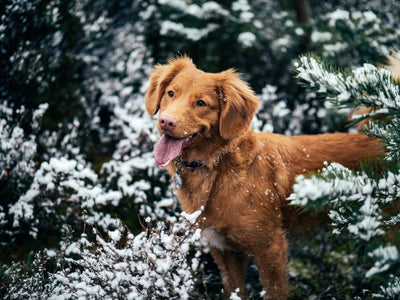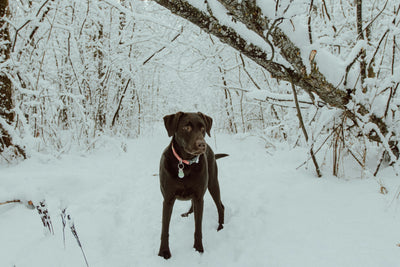As the temperature drops and snow starts to fall, it can be easy to spend more time indoors and less time playing with our beloved canine companions. However, it's important to remember that dogs still need exercise and stimulation, even in the winter. With a little bit of planning and preparation, you can safely enjoy the winter months with your dog by your side.
One of the most important things to consider when playing with your dog in the winter is their safety. Cold weather can be tough on dogs, especially those with short hair or thin coats. Make sure to bundle them up in a warm coat or sweater, and be mindful of the time they spend outside. It's also important to keep an eye out for signs of hypothermia or frostbite, such as shivering, lethargy, or discoloration of the skin.
Another thing to consider when playing with your dog in the winter is the type of activity you'll be doing. Harsh winter conditions can make some activities, such as hiking or running, more difficult or even dangerous. Instead, opt for activities that are more suitable for the weather, such as a leisurely walk, a game of fetch in a snow-covered field, or even indoor playtime.
Dog training is also a great way to keep your dog active and engaged during the winter. Teaching your dog new tricks or working on obedience training can provide both mental and physical exercise. Many dog training centres offer special classes or workshops during the winter months to help dogs and their owners make the most of the colder weather.
When it comes to winter playtime, it's also important to remember to protect your dog's paws from the cold and snow. Consider using booties or paw balm to keep their paws warm and dry. Also, be mindful of the surfaces your dog is walking on, as salt and other chemicals used to melt snow and ice can be harsh on their paws.
During the winter months, it's also important to consider the safety of your dog's paws when using salt to melt ice on your driveway or sidewalk. Traditional salt can be harsh on their paws and can cause irritation or even burns. An alternative is to use a paw safe salt like Paw Thaw Ice Melter Salt. This type of salt is specifically formulated to be gentler on dogs' paws and is less likely to cause any irritation. Additionally, pet friendly– Paw Thaw is a safer, biodegradable ice melter that will not harm your pet when used as directed. it does not change colour of paws, and not harmful if ingested. By using Paw Thaw Ice Melter Salt, you can ensure your dog's paws are protected while also keeping your walking surfaces safe and ice-free during the winter months.
Winter dog breeds, such as the Alaskan Malamute, Samoyed, and Siberian Husky, are built to thrive in colder climates. These breeds have thick coats that keep them warm in the snow and are often used for activities such as sledding and skijoring. They also enjoy being outside and running around in the snow, although it is important to make sure they have appropriate gear and protection for their paws. Additionally, these breeds are also well-suited for activities such as snowshoeing and hiking in the winter. It's important to note that some small dog breeds and short haired breeds may not be as well-suited for cold weather, so it's important to keep them warm with appropriate gear and limit their exposure to extreme cold.
In conclusion, while the winter months can be challenging for both you and your dog, with a bit of planning and preparation, you can both safely enjoy the season together. Remember to keep your dog's safety in mind, choose activities that are suitable for the weather, and consider the use of training equipment and protective gear to make the most of the winter season.







1 comment
I just wanted a newsletter about cats and dog care
thanks